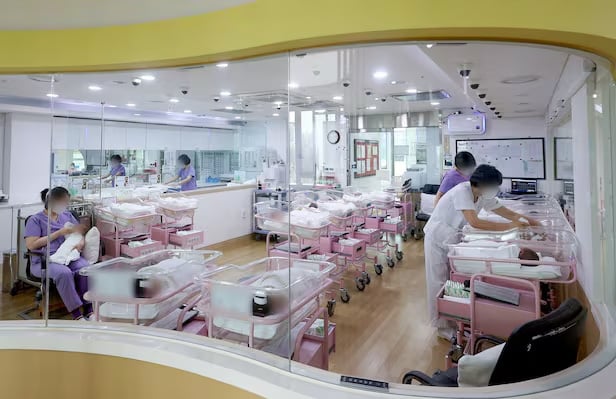In 2024, South Korean women will spend 2.87 million won (nearly $2,000) each on postpartum care services, up nearly 18% from three years ago.

A newborn care room at a postpartum care center in Seoul, South Korea - Photo: CHOSUN ILBO
According to Yonhap News Agency, 8-9 out of 10 pregnant women in Korea use postpartum care services at postpartum care centers.
Of this, each mother spent an average of 2.87 million won (nearly 2,000 USD) for about 12.6 days of stay at postpartum care centers. This figure increased by nearly 18% compared to three years ago.
According to the results of a survey conducted by the Ministry of Health , Welfare and Social Affairs of Korea from September 30 to October 12, 2024, 85.5% of women chose to stay at postpartum care centers to recover and rest after giving birth.
84.2% of people choose postpartum care at home, 11.2% choose care at their parents' home and 1% choose care at their husband's parents' home.
The average postpartum rest period for a Korean woman is 30.7 days. Among the mothers who participated in the survey, the longest stay and rest period at home was 22.3 days.
Next, the postpartum rest time of Korean women at their parents' home is 20.3 days, at their husband's parents' home is 19.8 days, and rest at postpartum care centers is 12.6 days.
In 2018, each mother in South Korea spent an average of 2.207 million won (over $1,500) on her time at postpartum care centers. In 2021, that number reached 2.431 million won (nearly $1,700).
Also according to Yonhap, six out of 10 mothers hope the Korean government will support postpartum care costs to ensure postpartum health for mothers.
At the same time, they also hope that the government will continue to extend maternity leave as well as increase support for mothers during maternity leave.
Recently, the Korean government has been trying to find ways to reduce the record low birth rate, such as extending maternity leave for both mothers and husbands, giving cash bonuses when giving birth, especially for families with many children, and increasing welfare payments for infants and young children.
In 2024, the birth rate in Korea has made new progress.
Many families in South Korea have been successful in catching "baby dragons" in the "green dragon" year of Giap Thin, bringing the birth rate to its highest level after nine years of gloom.
According to Statistics Korea, as of October 2024, the number of births nationwide increased by 13.4% compared to the same period in 2023.
Source: https://tuoitre.vn/han-quoc-phu-nu-chi-tien-ngay-cang-manh-tay-cho-cac-dich-vu-cham-soc-hau-san-20250206100941618.htm





























































































![[Infographic] In 2025, 47 products will achieve national OCOP](https://vphoto.vietnam.vn/thumb/402x226/vietnam/resource/IMAGE/2025/7/16/5d672398b0744db3ab920e05db8e5b7d)





Comment (0)